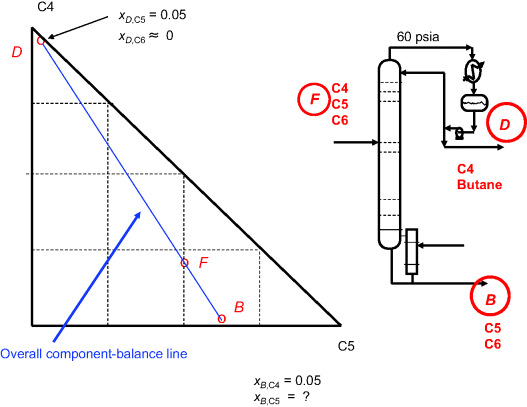Distillation Design Control Using Aspen Simulation Pdf
Learn how to develop optimal steady-state designs for distillation systems As the search for new energy sources grows ever more urgent, distillation remains at the forefront among separation methods in the chemical, petroleum, and energy industries. Most importantly, as renewable sources of energy and chemical feedstocks continue to be developed, distillation design and control will become ever more important in our ability to ensure global sustainability. Using the commercial simulators Aspen Plus® and Aspen Dynamics®, this text enables readers to develop optimal steady-state designs for distillation systems. Moreover, readers will discover how to develop effective control structures. While traditional distillation texts focus on the steady-state economic aspects of distillation design, this text also addresses such issues as dynamic performance in the face of disturbances.
Distillation Design and. Distillation Design and Control Using Aspen Simulation. Develop effective control structures for distillation. Distillation Design and Control Using Aspen Simulation William L. Luyben, AIChE and John Wiley & Sons, Inc. Hp Dl380 G4 Nic Drivers Tv Station Manager Full Game. more. , New York and Hoboken, NJ, 345 pp., $94.95, April 2006.
Distillation Design and Control Using Aspen Simulation introduces the current status and future implications of this vital technology from the perspectives of steady-state design and dynamics. The book begins with a discussion of vapor-liquid phase equilibrium and then explains the core methods and approaches for analyzing distillation columns.


• Aland Islands • Albania • Andorra • Armenia • Austria • Azerbaijan • Belarus • Belgium • Bosnia and Herzegovina • Bulgaria • Croatia • Cyprus • Czech Republic • Denmark • Estonia • Finland • France • Georgia • Germany • Gibraltar • Greece • Greenland • Holy See (Vatican City State) • Hungary • Iceland • Ireland • Italy • Latvia • Liechtenstein • Lithuania • Luxembourg • Macedonia • Malta • Moldova • Monaco • Montenegro • Netherlands • Norway • Poland • Portugal • Romania • Russia • Serbia • Slovakia • Slovenia • Spain • Sweden • Switzerland • Turkey • Ukraine • United Kingdom. • American Samoa • Australia • Bangladesh • Bhutan • British Indian Ocean Territory • Brunei • Cambodia • China • Christmas Island • Cocos (Keeling) Islands • Cook Islands • Fiji • Guam • India • Indonesia • Japan • Kazakhstan • Korea (the Republic of) • Kyrgyzstan • Laos • Malaysia • Maldives • Mongolia • Myanmar • Nepal • New Zealand • Pakistan • Papua New Guinea • Philippines • Samoa • Singapore • Solomon Islands • Sri Lanka • Tajikistan • Thailand • Timor-Leste • Tonga • Turkmenistan • Uzbekistan • Vanuatu • Vietnam.
Distillation Design and Control Using Aspen™ Simulation introduces the current status and future implications of this vital technology from the perspectives of. Distillation Design and. Distillation Design and Control Using Aspen Simulation. Friesian Cross Emblem Patch. Develop effective control structures for distillation.
Description Learn how to develop optimal steady-state designs for distillation systems As the search for new energy sources grows ever more urgent, distillation remains at the forefront among separation methods in the chemical, petroleum, and energy industries. Most importantly, as renewable sources of energy and chemical feedstocks continue to be developed, distillation design and control will become ever more important in our ability to ensure global sustainability.
Using the commercial simulators Aspen Plus® and Aspen Dynamics®, this text enables readers to develop optimal steady-state designs for distillation systems. Moreover, readers will discover how to develop effective control structures. While traditional distillation texts focus on the steady-state economic aspects of distillation design, this text also addresses such issues as dynamic performance in the face of disturbances. Distillation Design and Control Using Aspen Simulation introduces the current status and future implications of this vital technology from the perspectives of steady-state design and dynamics. The book begins with a discussion of vapor-liquid phase equilibrium and then explains the core methods and approaches for analyzing distillation columns. About the Author WILLIAM L.
LUYBEN, PhD, is Professor of Chemical Engineering at Lehigh University where he has taught for over forty-five years. Luyben spent nine years as an engineer with Exxon and DuPont. He has published fourteen books and more than 250 original research papers. Luyben is a 2003 recipient of the Computing Practice Award from the CAST Division of the AIChE.